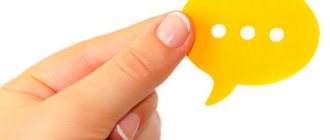Article:
Most parents are careful about how their child speaks.
If a baby begins to talk early, and pronounces words clearly and clearly, this is pride and joy for parents. This is not surprising, since timely speech development is a guarantee that the baby’s intelligence develops in accordance with the norms. But speech delay, on the contrary, causes concern and relative concern. This is justified, since violations are effectively corrected only between the ages of 2.5 and 7 years. At an older age, it will be almost impossible to eliminate the problem.
Delayed speech development in a child: first signs, alarming symptoms
Every year the number of children with speech delay increases. If a child does not understand the spoken language, then this is a reason to visit a specialist. If violations in the timing of the appearance of speech, a meager vocabulary, and pronunciation defects are detected, as a result of which the formation of sounds and grammatical formatting of speech suffer, a diagnosis of SRD is made.
Signs of RDD
The first manifestations of speech delay in a child may appear in infancy. They are characterized by the fact that the baby does not begin to show emotional reactions at 4 months of age. The next alarming symptom is the absence of the first words. If a baby does not try to pronounce basic words from the age of 9 months, then this is a sign of mental retardation.
At 18 months of age, difficulty chewing food is considered a warning sign. At the age of two, most often the signs of deviation are erased. But at the same time, it is imperative to pay attention to the development of the baby if his speech stands out significantly compared to his peers.
On a note! The main signs of RRD at the age of two are considered to be the absence of the first words or the use of a small number of words without increasing their number.
The main symptom indicating problems with speech development at 3 years of age is the inability to construct simple sentences consisting of several or more words. The following signs may also indicate deviations:
- the emergence of difficulties in understanding basic requests and instructions;
- difficulty understanding short literary works;
- misunderstanding of children's speech;
- illegibility of pronunciation and combination of sounds;
- poor pronunciation of word endings;
- disturbance of speech rates.
In addition to the signs listed above, the inability to express one’s own thoughts in simple sentences may indicate problems with speech development.
By the age of four, children with symptoms of developmental disorders are significantly different from their peers, and the signs indicating the development of delays become complex:
- disturbances in the sound side of speech are noticeable;
- during a conversation, the child uses a small number of words;
- the same words and combinations are used;
- difficulties in constructing a coherent statement are noticeable;
- there is an inability to form grammatical forms.
Additional Information! Most often, delays in speech development are diagnosed in male children.
If the speech of a child over 4 years old is fluent and hesitant, then it is necessary to show him to a speech therapist or speech pathologist to find out the reasons.
Causes of speech delay
FDD can be triggered by both biological and psychological factors. Often the problem is caused by incorrect upbringing, which deprives children of the effort to speak. Development can be triggered by insufficient attention, an inappropriate environment in which he cannot receive everything he needs for proper development, overprotection, as well as excessive demands from parents. Pathologies are often detected in children raised in bilingual families.
The following physiological factors can lead to delayed speech development:
- hearing and vision impairment;
- neurological diseases;
- underdevelopment of articulation organs;
- brain damage and trauma;
- hypoxia;
- premature and difficult birth;
- psychological trauma;
- parental alcoholism;
- congenital pathologies such as Down syndrome, autism, cerebral palsy and hyperactivity syndrome.
On a note! When speech deviations are associated with physiological reasons, the treatment should be more complex and lengthy, carried out by different specialists.
When should you contact a speech therapist?
Speech is characterized as the highest mental function. Therefore, the period of intrauterine development is an important stage. Often abnormalities are diagnosed too late, which leads to difficulties in obtaining and assimilating treatment. To avoid this, you need to closely monitor the baby from birth and understand that when the first signs appear, you need to pay attention to them and immediately do everything to eliminate them.
You should definitely contact a speech therapist in the following situations:
- if intrauterine growth retardation was diagnosed during pregnancy;
- after a long stay in intensive care or hypoxia;
- when feeding through a tube in the first days or months of life;
- for hearing and vision impairments;
- genetic syndromes;
- increased intracranial pressure;
- after suffering a birth trauma.
Templates of speech therapy characteristics for children of different levels for PMPC
On a note! As for speech itself, its development has very blurred boundaries. You should not constantly compare your baby with peers, since speech development is a purely individual process.
When a child suffers only from speech, the cause is often individual characteristics. If the baby does not speak at all or utters only a few words after three years, and his speech is incomprehensible, then this is a reason to immediately contact a specialist.
Age : preschool children. Source : Kirillova E.V. Speech therapy work with speechless children: Educational and methodological manual. - M.: TC Sfera, 2011. - 64 p. (p.19-20) Speech therapy examination of speechless children should be comprehensive. Conventionally, it can be divided into three parts.
Part 1 - speech understanding is studied, the state of impressive speech, auditory attention and phonemic perception are examined. Objectives: - to identify the features of phonemic perception of speech and understanding of the semantic content of the sound stream - semantic and emotional meaning; — to clarify the child’s readiness to communicate and a tendency to improve the language system.
Tasks
Determining the volume and accuracy of the dictionary. Task 1. Invite the child to show toys, for example: “Show me a doll (matryoshka, pyramid, bear).” Then modify the task: “Take a doll (matryoshka...).” Offer to serve toys one by one: “Give me a doll (matryoshka...). If the child copes with the task, invite him to recognize familiar objects in the picture (cabinet, ball, cup).
Task 2. Offer to show everyday objects: table, chair, bed, cup, spoon, plate, shirt, dress, socks.
Task 3. Finding out knowledge of general words. In the room, group objects by topic: clothes, shoes, dishes, fruits, vegetables, toys. Invite your child to find certain objects: “Find dishes (toys, clothes, etc.).
Task 4. Knowledge of body parts (arm, leg, head) and body parts of toy animals (paw, head, tail). Invite your child: “Show me your hand,” “Where is the bunny’s paw?”
Task 5. Correlating objects with their purpose. Place familiar objects in front of your child: an apple, a ball, a toothbrush. Ask questions: “What do you play? What do you use to brush your teeth? What do you eat?" Then replace the objects with object pictures and repeat the questions.
Task 6. Finding out the volume of verbal vocabulary.
Place plot pictures in front of the child in which the same person (a girl or a boy) performs different actions. Give the child the opportunity to look at the pictures and then show the one he needs in response to the question: “Show where the girl goes (stands, runs, eats, sleeps, plays, washes herself).”
Ask questions to the names of the actions shown in the picture, expressed by reflexive verbs: “Show who is washing (standing, running).”
Place two pictures in front of the child depicting actions in a similar situation. Invite him to show the one he needs in response to the questions: “Show me who washes his face? Who's drying off? (eats/drinks, runs/walks, etc.).
Task 7. Understanding the names of features of objects.
Invite your child to compare objects in the room and show them, answering the questions: “Where is the big table? Where is the little one? (thick/thin stick, long/short ribbon, high/low house)"; “Which cube is bigger? Which one is smaller? (pencil longer/shorter, pyramid higher/lower)”; “Where is the red (yellow, blue) ball?”
Identification of differentiation of elementary grammatical forms.
Task 1. Understanding the singular and plural forms of a noun: “Where is the doll? Where are the dolls? (pyramid/pyramids, car/machines, book/books).”
Task 2. Understanding prepositions reflecting spatial relationships: “Put the toy in the box (behind the box, under the box, in front of the box).”
Task 3. Understanding diminutive suffixes: “Show me where the table is?” Where's the table? (book/little book, doll/doll, box/box).”
♦ Understanding sentences.
Task 1. Follow the instructions: “Close your eyes (raise your leg, stroke the cat, bring the cube).”
Task 2. Establishing the opportunity to remember and perform two actions formulated in one request: “Take the bear and put it on a chair (go to the table and take a pencil, take the cubes from the table and put them in a box).”
♦Research of auditory functions and phonemic perception.
Task 1. Finding out the orienting-search posture for the sound of objects: find a sounding squeaky toy in the room and follow its movement with your eyes.
Task 2. Determining the direction of auditory attention: with your eyes closed, indicate where the sound is coming from and turn your face in this direction.
Task 3, Recognition and discrimination of vowel sounds from a series. Say a series of vowel sounds (no more than three). Invite your child to raise his hand (clap his hands) when he hears a certain sound (pre-agreed).
Part 2 - non-speech functions are studied.
Goals:
- determine the characteristics of sensorimotor and tactile perception, the ability for purposeful activity, the degree of concentration of attention on an object;
— identify specific components within these functions.
Tasks
Task 1. Orientation in the surrounding space.
Ask your child to show “up/down” as well as directions: “Show me where the group is? (bedroom, physical therapy room, window, door).”
Give your child a piece of paper rolled into a tube (“spyglass”) and ask him to look through it and see objects on the window (cabinet, table, shelf).
Task 2. Orientation on a plane. In front of the child’s eyes, build a house from prepared parts (the house is a square, the roof is a triangle, the pipe is a rectangle) and ask: “Show me where the roof is? Where is the pipe?
Task 3. Presence of postural praxis when simulating movements (in terms of general motor skills). Invite your child to repeat certain movements after you (sit down, stand up, stomp, clap, shake your head, bend over, jump).
Task 4. The presence of postural praxis when performing tests on fine motor skills, the possibility of differentiation of finger movements and the ability to switch.
Repeat sequentially the poses “fist”, “roof”, “boat”, “goat”, “circle”, “glasses”.
Alternate two poses: “fist/palm”, “fist/goat”, “palms/boat”, “glasses/fist”.
Invite your child to touch each finger in turn, starting with the second thumb of the same hand.
Task 5. Oral praxis. Invite your child to imitate several actions: open his mouth wide; smile; puff out your cheeks; stretch your lips into a tube; make your lips as if making the sound [o]; stick out your tongue with a spatula; raise the tip of the tongue up; lower the tip of the tongue down; place the tip of your tongue in the right, then in the left corner of your mouth.
Task 6. Ability to switch movements. Invite your child to repeat two movements after you.
Task 7. Constructive praxis: reproduce a figure from two, then three sticks according to the model, create a design from memory.
Task 8. Formation of operations of visual-spatial analysis and synthesis and consistent implementation of constructive activities: fold cut pictures from 2-3 parts with a straight edge; a lightweight version of Koos cubes; complete tabs on Seguin's board.
Part 3 - nonverbal components of communication are studied.
Goals:
- identify involuntary reactions and gestures used in non-verbal communication;
- study current and potential opportunities for the development of a child’s communication, the degree of spontaneity in acquiring communication skills.
Tasks
Task 1. Invite your child to shake your hand.
Task 2. Reaction to a stranger. A person unfamiliar to the child enters the office and starts a conversation with you.
Task 3. Reaction to impression. The child enters an office with a well-known environment. There is a new bright toy on the table.
Task 4. Imitation ability: invite your child to copy your gestures and facial expressions.
Task e. Ask the child to show familiar actions with a gesture: drink, eat, sleep, wash (hands), brush (teeth), comb your hair, stroke (cat).
Task 6. Modeling situations that promote the invocation of communicatively significant gestures (yes, no, I want, give).
Task 7. Without verbal instructions, invite your child to understand your gestures and expressive movements (pointing gesture, head nod, head shake, inviting gesture, denial gesture).
Task 8. Ability to portray and play a role: “Fly like a bird”, “Jump like a bunny”, “Stomp like a bear”, “An elephant is walking”, “A dog is running”, “A fox is sneaking”.
All proposed tasks must be emotionally charged and planned in such a way that the reaction to them can be minimal. Various means of stimulation and positive reinforcement of the child’s activities are used.
| Download a ready-made calculation using this method | Order a ready-made calculation using this method | Ask us a question about this method |
At the moment we do not have a ready-made calculation for this method, perhaps it will appear later. If you want to order an exclusive calculation using this method with your conditions or in combination with other methods, write to us by clicking on the second link. If you think that the methodology contains unreliable data or you have questions about conducting research on it, click on the third link.
SDD or autism
When a child differs sharply from his peers in speech, behavior, and expression of emotions in a nonverbal form, this causes concern among his parents. Often such children are diagnosed with developmental disorder, but in some cases such manifestations may indicate autism. In fact, these two diagnoses differ in different abnormalities and require unique treatment.
If there is a disorder characterized by impaired communication with the outside world, then autism is diagnosed. The first manifestations of autism can become noticeable as early as 2 years of age. The diagnosis, as a rule, is confirmed only by 3-5 years of age.
Characteristics of speech development in early childhood autism
In early childhood autism, the following speech disorders are observed:
- speech is completely absent;
- the child cannot express his desires and needs;
- there is no reaction to the speech of others;
- difficulties arise in understanding words and phrases;
- lack of response to verbal instructions;
- is not able to construct and correctly formulate sentences;
- answers the question posed with the same question;
- speech is too loud or quiet;
- there is a literal understanding of speech.
Important! Children with early autism do not understand jokes well and cannot take hints correctly.
What to do if a child does not understand speech at 3 years old
If a child does not understand spoken speech at the age of 3, then the most important thing is to seek help from specialists as early as possible. If, after the research, a diagnosis of RRD is made, you should be patient and persevere.
When diagnosing global speech disorders, drug therapy, magnetic therapy, dolphin therapy, hippotherapy, electroreflexotherapy, as well as classes with a corrective teacher are prescribed.
And, of course, parents should show special persistence and patience. The successful outcome of the treatment will largely depend on their unhurried and consistent actions. A defectologist or speech therapist will explain how to work with a child with speech delay at home. It is also worth taking advantage of the advice and recommendations of experts that can be obtained on the Internet. The most important thing is to understand the situation and understand why the deviations occurred.
On a note! As for delayed speech development in children 2 years old, treatment is practically no different. The only thing is that the dosage of medications is adjusted.
Larisa Nurieva: “Speech development in autistic children” - a book to help parents
L. G. Nurieva’s book “Speech Development in Autistic Children” is very popular among specialists; its methodological developments are also successfully used to correct speech in children with sensory and motor alalia.
In her book, Nurieva outlined her own methodology, which makes it possible to develop both impressive and expressive speech at a professional level.
Why is it so important to identify trunk dysfunction?
Many of the child's neurological problems may be associated with dysfunctions of the brain stem and other subcortical structures. These structures are responsible for how the child perceives information by ear, whether he can concentrate on a task, and whether he assimilates new information. If they do not work correctly, speech, attention and behavior problems occur. The brain stem also contains centers that control all vital functions: breathing, heartbeat, chewing, articulation, urination and defecation. Therefore, normal functioning of the brain stem is the foundation of a child’s development.
The earlier problems are identified, the easier it is to normalize brain function. Register your child for ASVP diagnostics by clicking on the button below this text or by calling. The cost of the study can be found in the “prices” section of the website.
Find out prices
Sign up
Problems of speech development in children with hearing loss
Children with hearing loss develop speech differently from everyone else. The process depends on the following factors:
- degree of hearing impairment;
- time of occurrence of the defect;
- pedagogical efforts;
- individual characteristics of the child.
Automation of sound
Important! As practice shows, the more hearing loss a child has, the more speech suffers.
If hearing loss occurs before the age of two, the condition leads to a complete absence of speech and the child is recognized as disabled. In such a situation, a speech disability in children is indicated, the doctor tells how to register it. With hearing loss between the ages of 3 and 3.5 years, there is a loss of formed speech, and the baby becomes non-speaking.
Speech almost completely disintegrates in children who lost their hearing between the ages of 4 and 5. In these cases, disability may also be issued.
Speech is severely distorted with hearing loss at 6-7 years of age. A lasting result, even with professional treatment, is impossible. If hearing loss occurs after 7 years, then speech can be preserved if systematic correction work is carried out.
Corrective and developmental methods of teaching speech to deaf children
It is possible to implement the educational, educational, developmental and correctional process for deaf children only under the condition of a special methodology. This is explained by the fact that deaf children have specific physiological and mental characteristics. They need special materials and a special approach.
To achieve results, teaching techniques, forms and methods of different nature must be used. Komarovsky clearly introduces in detail the methods of teaching speech to deaf children.
How is the ASVP study carried out?
This is an absolutely safe and painless study that can be carried out from the first months of life. It takes 12–15 minutes. Sensors are attached to the child's head. Through the headphones he hears a series of sounds (clicks, then tones). The device records the responses of subcortical brain structures to these stimuli. Different parts of the brainstem must respond sequentially to the sound signal after a certain time, which is measured in milliseconds.
The study consists of three parts.
- Classic version of ASVP
- Assessment of the speed of sound signal transmission by brain stem structures from the cochlea of the inner ear to the medial geniculate body of the thalamus (VI peak method, developed at the Prognoz clinic)
- Assessment of the brain’s ability to respond to new information, assessment of the ability to concentrate (P-300 method).
Features of speech formation in children with mental retardation
The development of speech characteristics in mentally retarded children is characterized by a significant delay in speech development and underdevelopment of all components. The formation of speech skills in such children occurs with great delay and abnormalities. All aspects suffer, and the most damaged is semantics.
Psychological and pedagogical characteristics of children with mental retardation
Mental retardation is not classified as a specific condition or disease. Such children are characterized by significant deviations in the development of motor skills. They begin to walk, sit, stand much later, the child’s ability to get acquainted with surrounding objects and navigate in space decreases, and they also begin to respond to words and requests very late.
On a note! Memory, thinking, and speech skills develop with large deviations. Indecision and lack of emotionality are noticeable in actions.
Features of speech
The speech development of mentally retarded children occurs in a unique way and with great delays. They come into emotional contact with relatives late and not as actively as ordinary children. Many mentally retarded children speak their first words at age 3. As a result of the delay, children interact poorly with adults and peers.
Phonetic and intonation-expressive aspects of speech
A common speech disorder among children with mental retardation is erased dysarthria. This deviation manifests itself in disorders of the phonetic and intonation-expressive components. At the same time, children experience illegibility, slurredness and lack of emotional picture.
Features of the dictionary and speech regulation of children’s activities
In mentally retarded children, speech is considered as a special type of activity and cognitive process. Speech deficiencies in such children are very common, so it needs to be developed systematically.
On a note! It is important to understand all the features of the dictionary and correctly regulate speech activity, as well as what type of reading is typical for children with speech impairments.
Endogenous and exogenous causes of underdevelopment
Endogenous or exogenous factors lead to disturbances in the mental or physical development of children.
Endogenous diseases include certain diseases, both hereditary and acquired. Exogenous causes include injuries, poisoning and infectious diseases of the mother during pregnancy, as well as malnutrition and Rh conflict.g
If signs indicating a delay in speech development appear, you must immediately seek help. Only in this case can the deviation be compensated for as quickly as possible.
After making a diagnosis and prescribing treatment, you must follow all recommendations and be sure to supplement the work of the defectologist with medication and physiotherapeutic treatment. In combination, all of the above activities will help correct the situation and allow the child to fully use their own capabilities.




